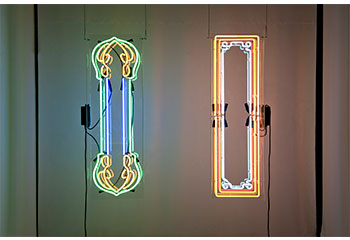Shellie Zhang never knew the history of the building at 285 Spadina Ave. in downtown Toronto. A Rexall pharmacy recently opened on the main floor, but the rest is the same eyesore it’s been for years: decrepit brown bricks and a distinct lack of windows disconnect it from the intersection of Dundas and Spadina, the heart of the city’s bustling Chinatown.
“It’s always been very dark, very mysterious,” Zhang says. “I just assumed it was empty office space that couldn’t be rented out.”
In fact, the building began as Toronto’s first Yiddish performance space, a 700-seat venue called the Standard Theatre, which was constructed by the city’s nascent Jewish community in 1921. It was converted into a movie theatre called The Strand in 1934, then became the Victory Burlesque in 1961, where it hosted shows by the likes of Iggy Pop and Rush. In 1975, it was transformed into the Golden Harvest cinema, which was known for showing kung fu movies and became a popular gathering point for Chinese immigrants.
But Zhang knew none of that when she was contacted by Evelyn Tauben, who curates Fentster, an exhibition space that inhabits the front window of a storefront that belongs to Makom, a progressive Jewish organization in downtown Toronto.
Tauben wanted to collaborate with an artist of Chinese heritage to create an exhibit on the history of the city’s Kensington Market area, both from a Jewish and Chinese perspective. The Myseum project, a decentralized municipal art museum, was looking for works on the theme of Arrivals + Departures – a perfect fit.

In researching Chinese artists, Tauben found Zhang, a Chinese-Canadian who was born in Beijing and moved to Canada when she was seven. Zhang’s past works have explored archival materials and the Chinese-Canadian identity.
“Beyond that, I was taken with her bold, clean aesthetic and how she tackles complex themes about cultural transmission, the immigrant experience and commodification using pared-down, but striking, imagery,” Tauben told The CJN via email.
Zhang estimates that she spent around 40 hours digging through old files in the Ontario Jewish Archives, as well as the provincial and municipal archives, searching digitized texts and flipping through stacks of newspapers, memos and government documents, looking for connections between the two 20th-century immigrant communities.
Once she learned about the history of 285 Spadina Ave. – a building she’d passed countless times and never thought twice about – she decided to pursue it with her art.
READ: ARTIST’S URBAN GRAFFITI WELCOMED INSIDE VAUGHN CITY HALL
“Even though these two organizations were separated by time, I love that they shared this space,” she says.
“It was a building that was literally, brick by brick, built by the community.”
Inspired by the two theatres’ marquees, Zhang set about recreating them in neon and placing them side by side, reflecting two versions of the neighbourhood’s past.
The resulting work, titled A Place for Wholesome Amusement, contrasts the two signs in ghostly, hollowed-out frames. The Yiddish sign was part of the art nouveau movement, with intricate details and curves, almost resembling a Torah scroll with its bulbous top and bottom; while the Golden Harvest sign recalls a more functional 1970s design, with a stately heft, warm gradient and quieter flourishes within the rectangular skeleton.
Zhang has long been fascinated by commercial signage and its effects on mainstream society. Corporate marketing has subtly shaped our cultural aesthetic for decades, and the designs of the 20th century established many styles we still recognize today.
But despite this recognition, time moves on, and the city itself has evolved to the point where many residents would never recognize the relics of its past. Ultimately, Zhang says, that is the point of her work – to remind passersby of the rich tapestry that made Toronto what it is.
“The city has changed so, so much,” she says. “I want people to know the history of the land and the city that we live in, and cherish those things as valuable.”
“A Place for Wholesome Amusement” will be on display until May 22 at 402 College Street, presented by Fenster and the Ontario Jewish Archives. For more information: www.fentster.org
